A visual survey of post-war European churches captures modernity’s spiritual exploration
The most dramatic post-war European churches are collated in ‘Sacred Modernity: The Holy Embrace of Modernist Architecture’, a six-year study by photographer Jamie McGregor Smith

There is a rich offering of post-war European churches in the realm of religious architecture; surprising, perhaps, given the horrors of the first half of the century and the apparent absence of the divine. Clearly, a change was needed; and this new monograph from photographer (and Wallpaper* contributor) Jamie McGregor Smith, is a personal journey through the new, post-war era’s modernist architecture, bringing a fresh creative eye to these worn and weathered structures.
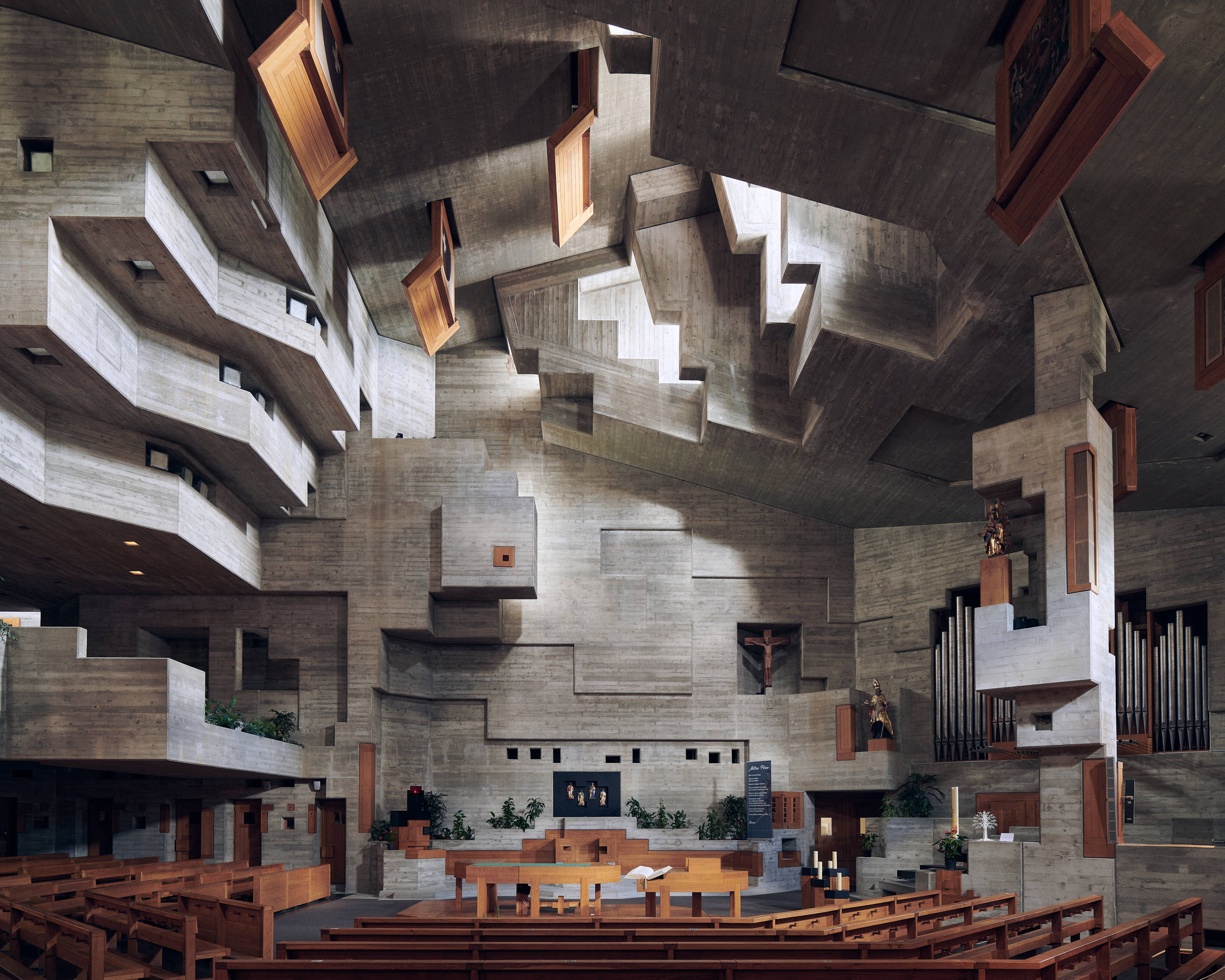
L’Église Saint-Nicolas, Heremence, Switzerland, by Walter Maria Förderer, 1967-1971
'Sacred Modernity': an ode to post-war European churches
For spiritual leaders, a new generation of ecclesiastical architecture was needed for a new generation of worshippers, one that eschewed the hierarchies and symbolism of the past and dove deep into modernism’s advances. Architects had free rein to explore the structural dynamism of new materials and the abstract arrangements conjured up by new juxtapositions of space and light.
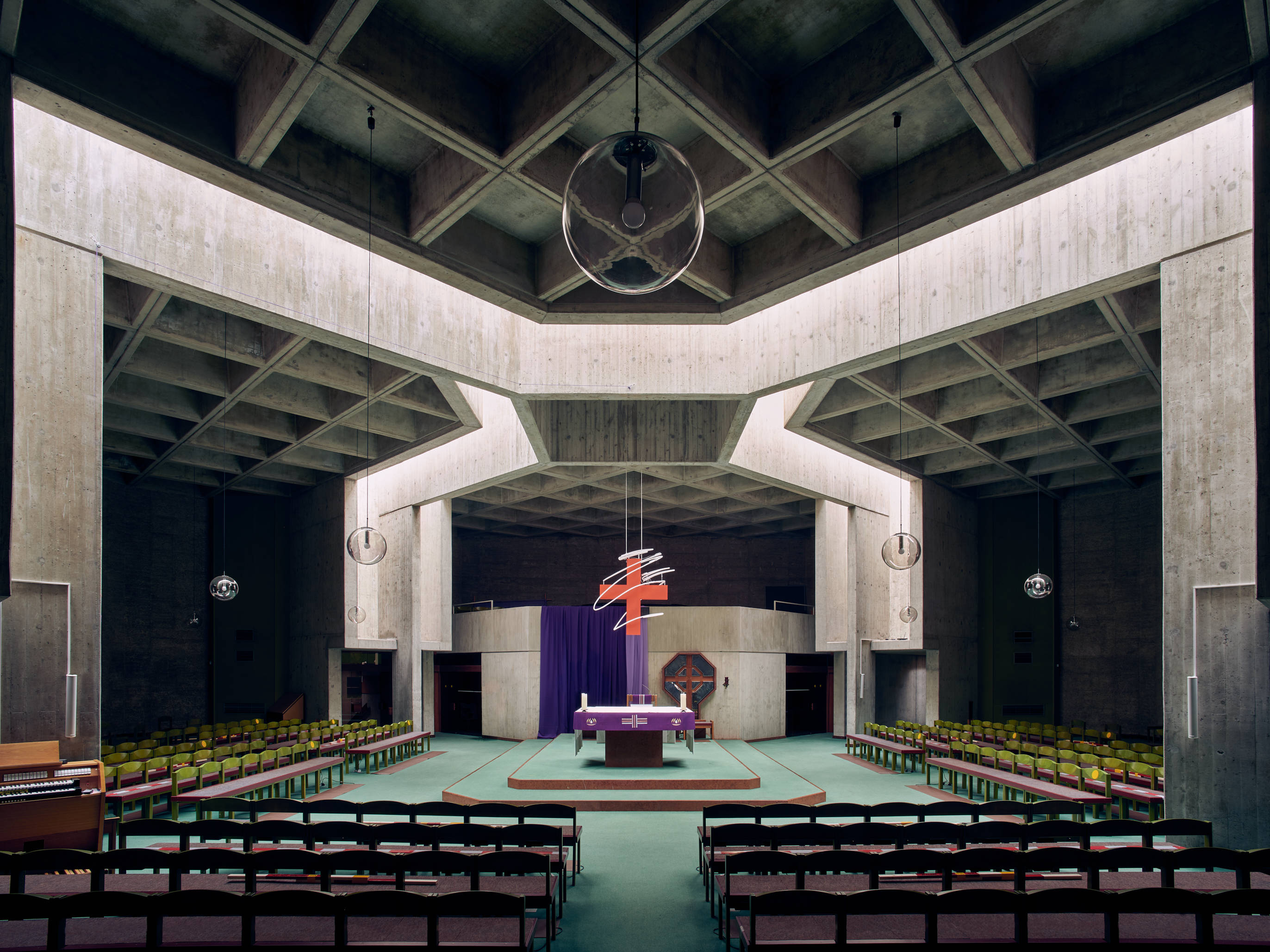
Heilig-Kreuz-Kirche, Vienna, Austria, by Hannes Lintl, 1971-1975
According to the photographer, ‘this was the period when the church married the atheist architect and bore a child of pure form’. The projects chronicled, especially those in Germany, Austria and Switzerland, frequently featured raw concrete as their primary material, and this primal brutalism gives these interiors the same power as the great medieval cathedrals.
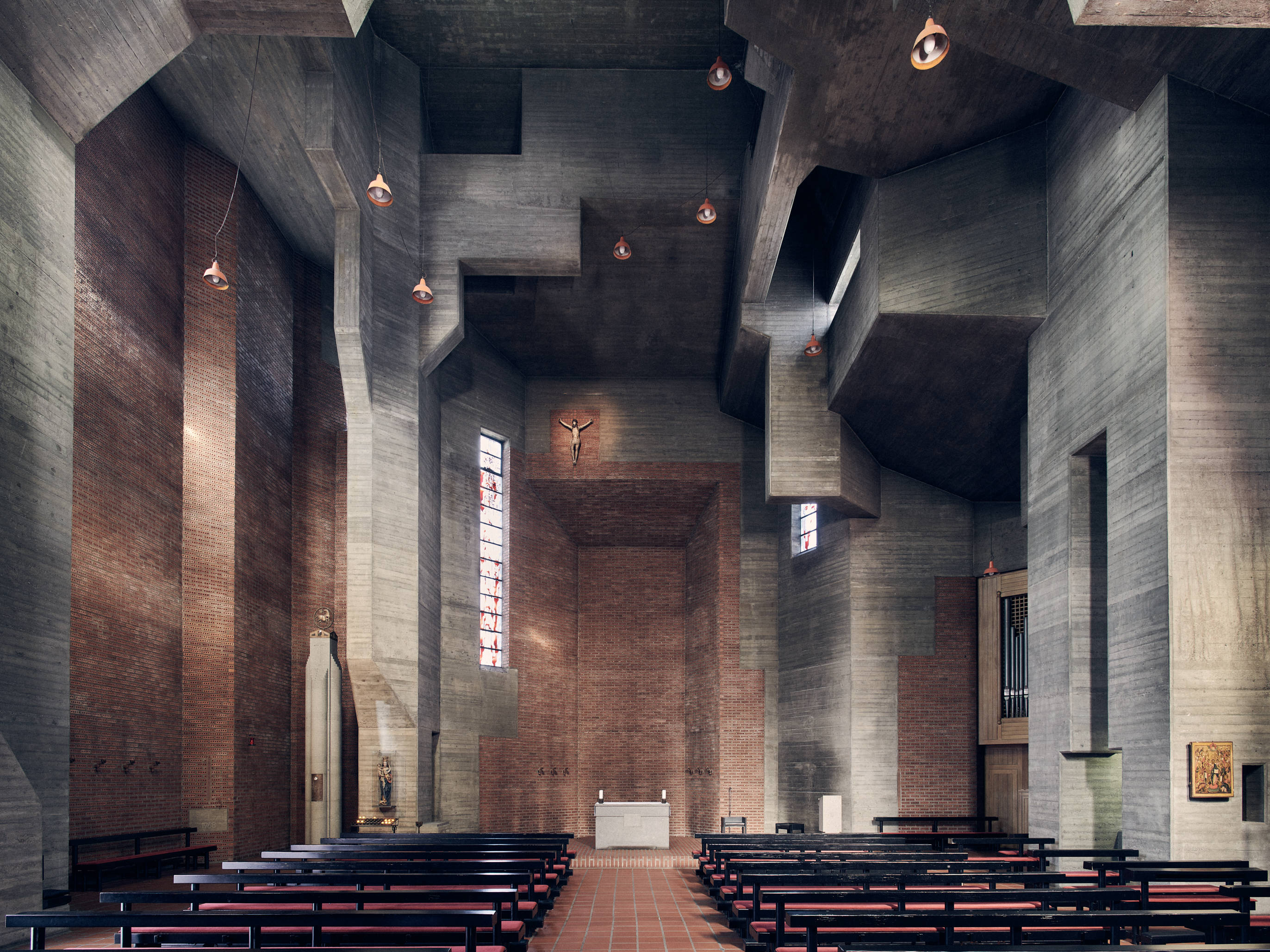
Christi Auferstehung Kirche, Cologne, Germany, by Gottfried Böhm, 1968-1970
McGregor Smith’s stunning images capture the enduring quality of all great ecclesiastical buildings, a sense of being out of time and place, transporting the visitor to a different plane, regardless of their beliefs. In a characteristically iconoclastic endpiece, the writer Jonathan Meades considers the dilution of drama, power and dread in the modern British church, rendered insipid by reform and the democratising influence of modernism.
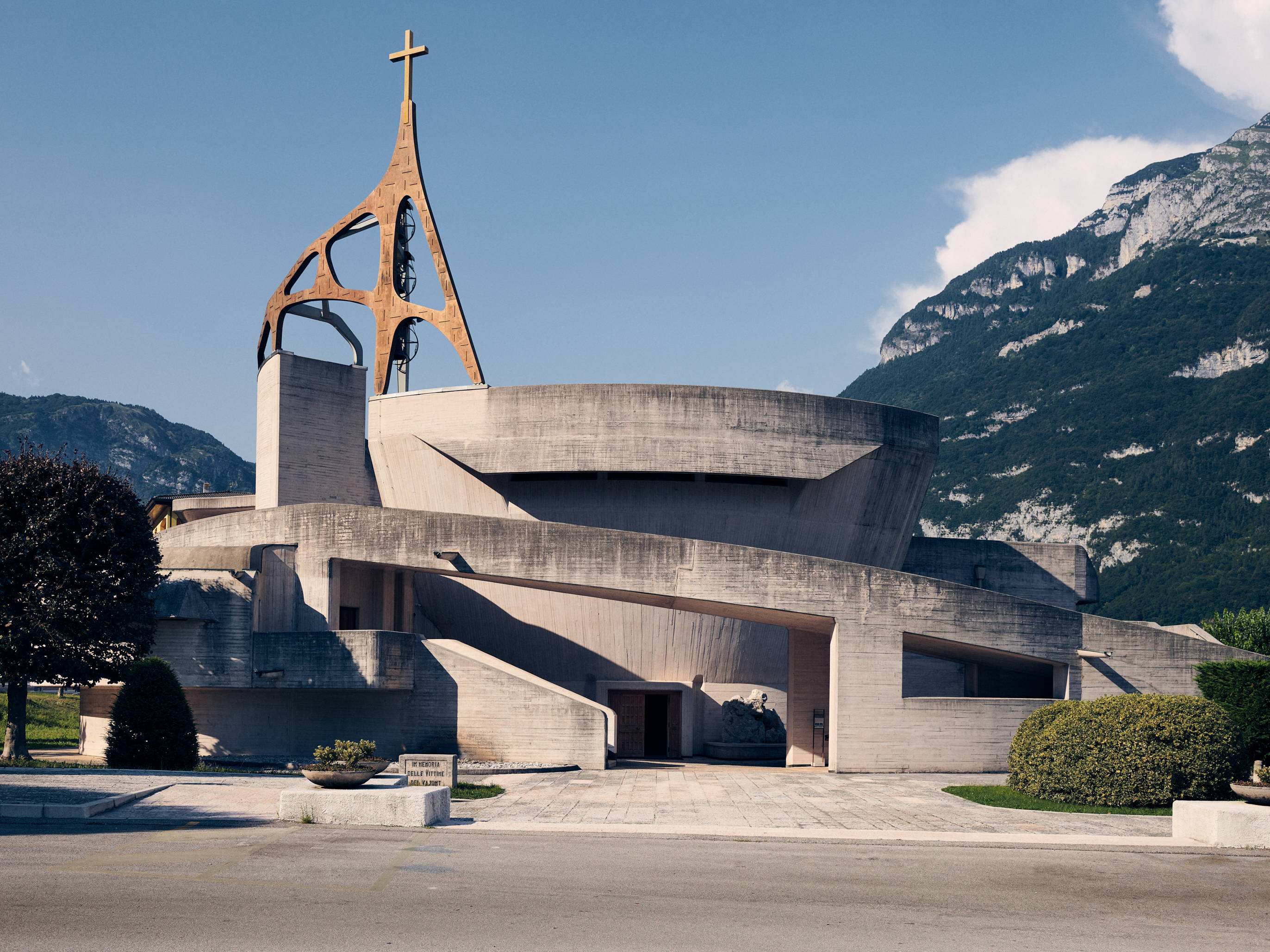
Chiesa di Santa Maria Immacolata, Longarone, Italy, by Giovanni Michelucci, 1975-1977
Regardless of Meades’ declaration that ‘there is no modern vocabulary to embody such an ancient and anachronistic idea’, the featured projects all have a distinct individuality and strength. Unlike a traditional church, these are structures that might outlast their respective creeds, and retain their strength despite society’s inexorable ongoing drift from organised religion.
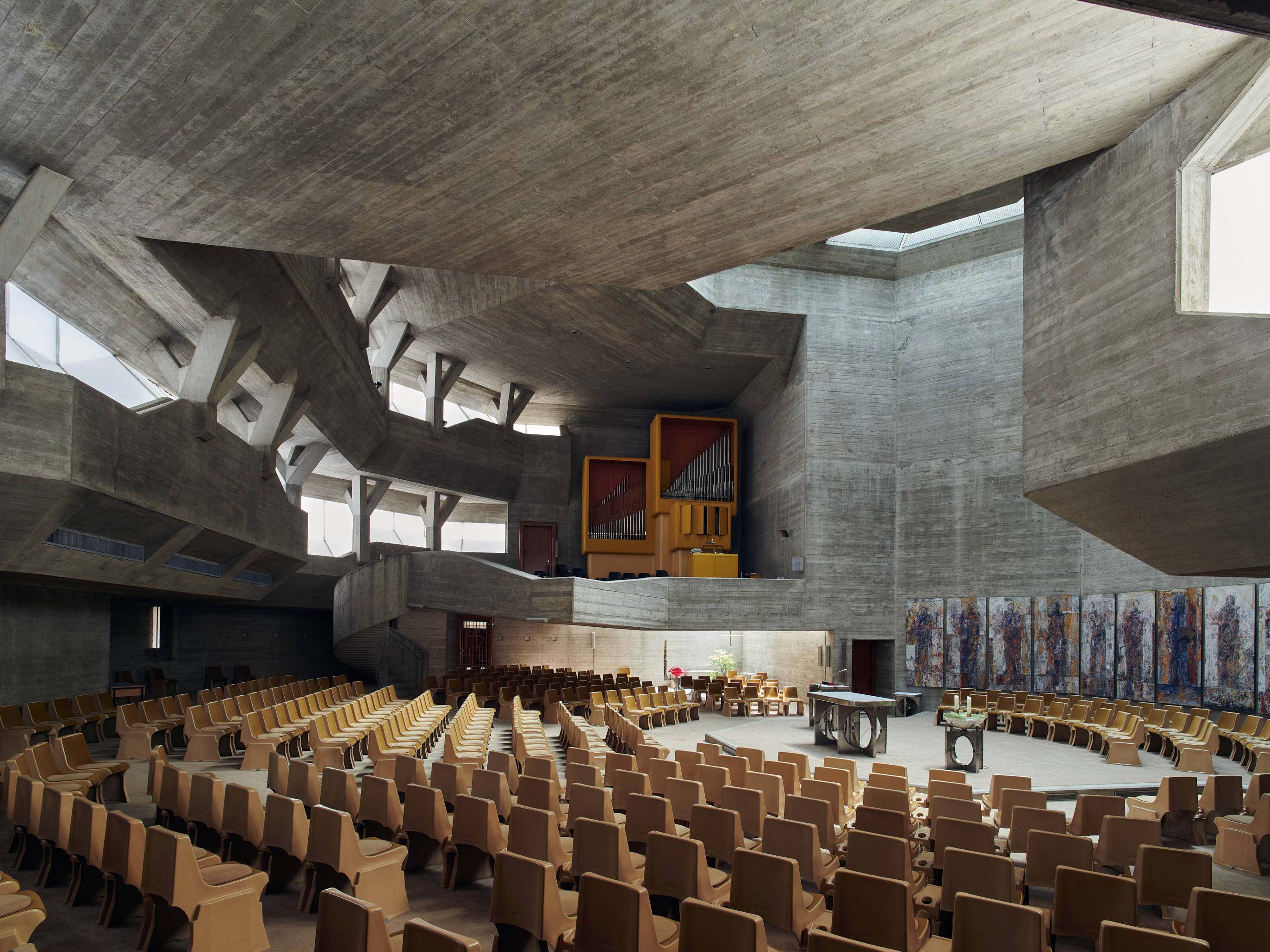
Osterkirche, Oberwart, Austria, Gunther Domenig, by Eilfried Huth, 1967-1969
'Sacred Modernity: The Holy Embrace of Modernist Architecture', Jamie McGregor Smith, Hatje Cantz, £54, also available from Amazon and Barnes & Noble
Receive our daily digest of inspiration, escapism and design stories from around the world direct to your inbox.

Jonathan Bell has written for Wallpaper* magazine since 1999, covering everything from architecture and transport design to books, tech and graphic design. He is now the magazine’s Transport and Technology Editor. Jonathan has written and edited 15 books, including Concept Car Design, 21st Century House, and The New Modern House. He is also the host of Wallpaper’s first podcast.
-
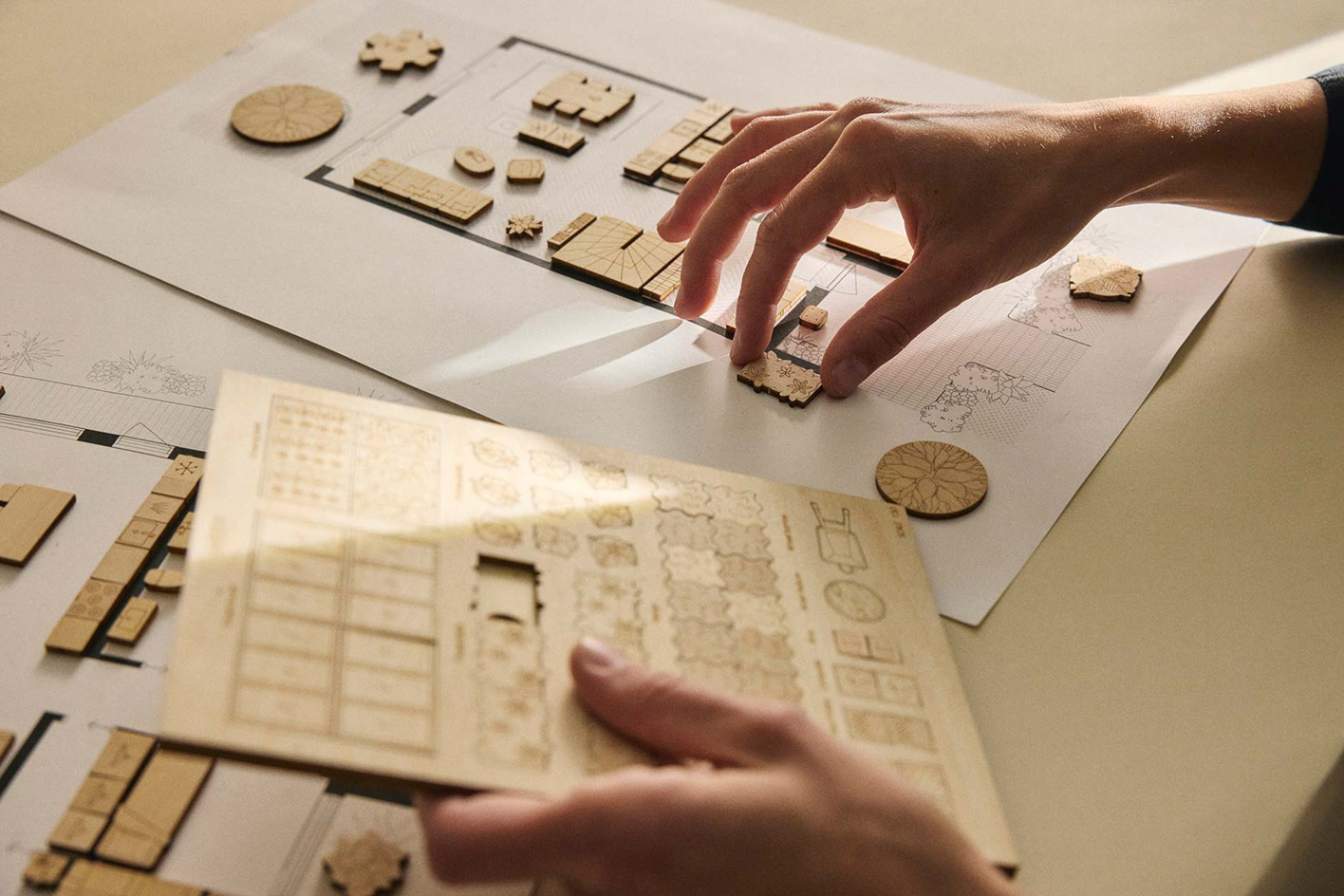 An analogue room planner kit makes designing your dream home a doddle
An analogue room planner kit makes designing your dream home a doddlePlanora, a new room planner option conceived by a team of three Swedish architects, is a beautifully produced, analogue tool to help conceptualise your new space
-
 Sound and vision are combined in this Dyson x Porter bag and wireless headphone combo
Sound and vision are combined in this Dyson x Porter bag and wireless headphone comboDyson’s first limited edition collaboration with cult Japanese bag brand Porter brings together the OnTrac headphones with a stylish shoulder bag
-
 RIBA reveals more three shortlisted structures for 2025’s House of the Year award
RIBA reveals more three shortlisted structures for 2025’s House of the Year awardThree more houses join the shortlist for the UK’s highest domestic architectural accolade. We explore the Triangle House, Amento and Jankes Barn
-
 David Kohn’s first book, ‘Stages’, is unpredictable, experimental and informative
David Kohn’s first book, ‘Stages’, is unpredictable, experimental and informativeThe first book on David Kohn Architects focuses on the work of the award-winning London-based practice; ‘Stages’ is an innovative monograph in 12 parts
-
 Modernist Scotland explores the country’s impressive legacy of contemporary architecture
Modernist Scotland explores the country’s impressive legacy of contemporary architectureA new book, Modernist Scotland, delves into the art and ambitions of the International Style in post-war Scotland, presenting 150 projects that typify an age of optimism and innovation.
-
 Explore Tom Kundig’s unusual houses, from studios on wheels to cabins slotted into boulders
Explore Tom Kundig’s unusual houses, from studios on wheels to cabins slotted into bouldersThe American architect’s entire residential portfolio is the subject of a comprehensive new book, ‘Tom Kundig: Complete Houses’
-
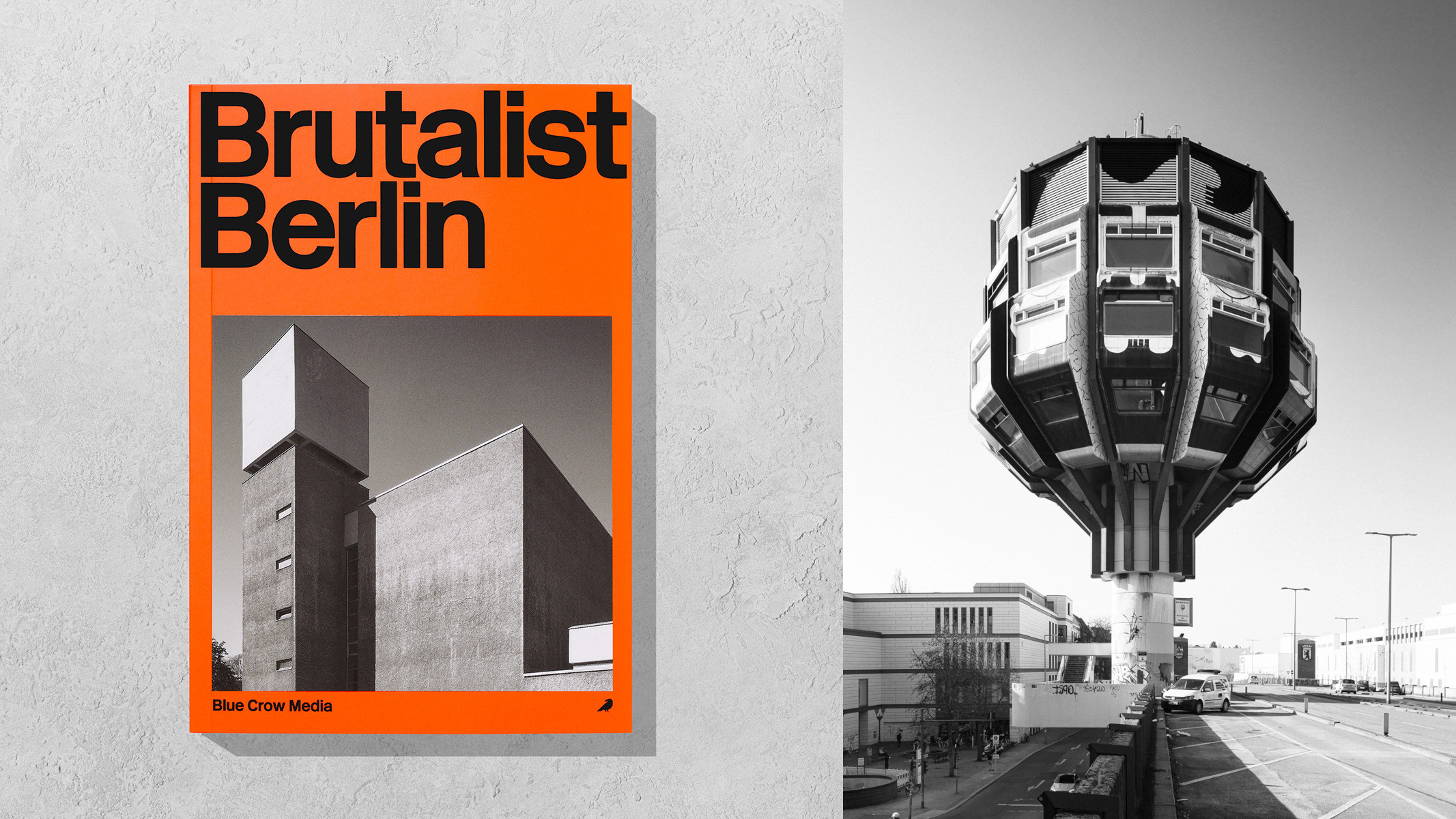 ‘Brutalist Berlin’ is an essential new guide for architectural tourists heading to the city
‘Brutalist Berlin’ is an essential new guide for architectural tourists heading to the cityBlue Crow Media’s ‘Brutalist Berlin’ unveils fifty of the German capital’s most significant concrete structures and places them in their historical context
-
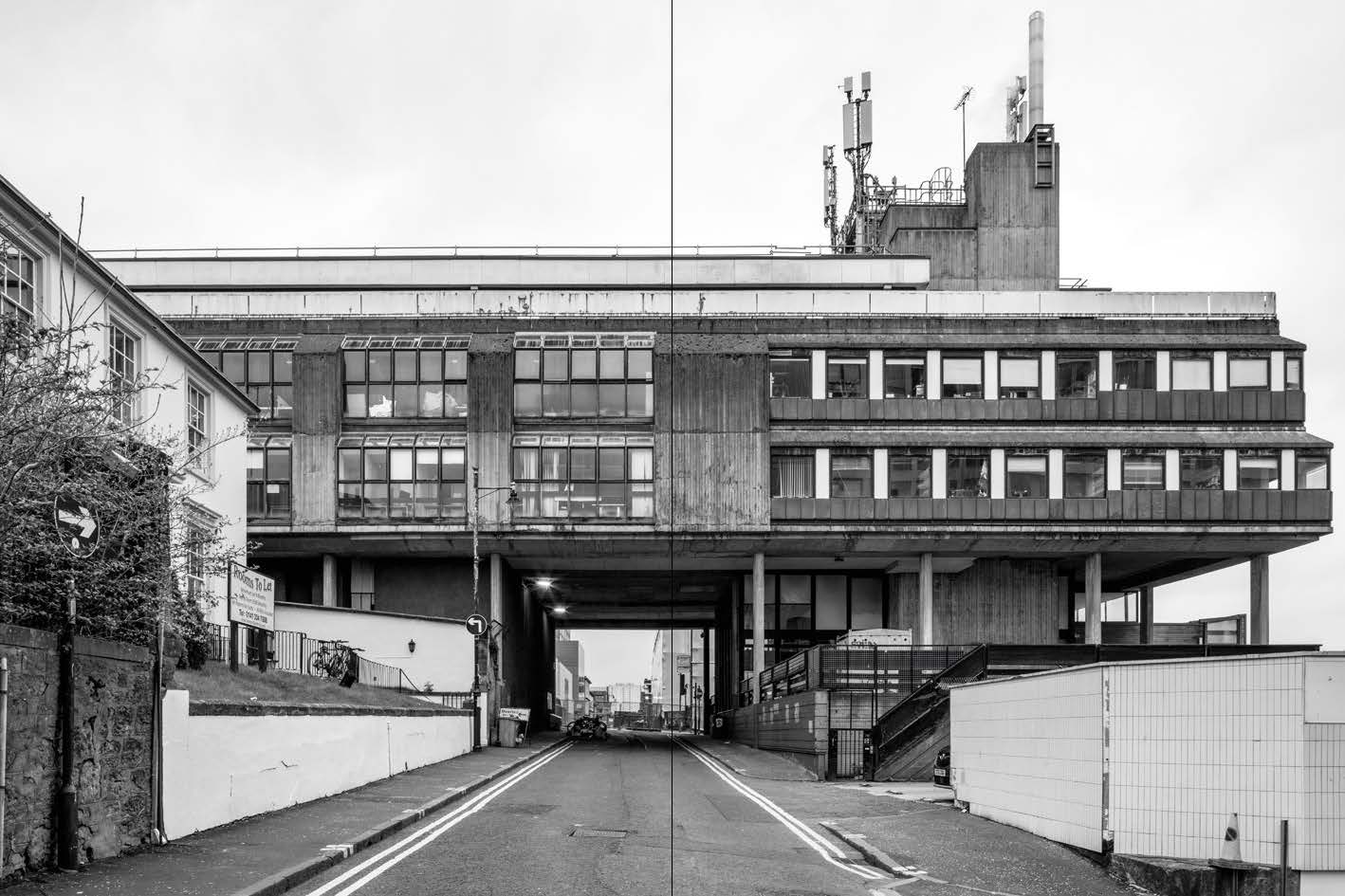 Celebrate the angular joys of 'Brutal Scotland', a new book from Simon Phipps
Celebrate the angular joys of 'Brutal Scotland', a new book from Simon Phipps'Brutal Scotland' chronicles one country’s relationship with concrete; is brutalism an architectural bogeyman or a monument to a lost era of aspirational community design?
-
 A new Tadao Ando monograph unveils the creative process guiding the architect's practice
A new Tadao Ando monograph unveils the creative process guiding the architect's practiceNew monograph ‘Tadao Ando. Sketches, Drawings, and Architecture’ by Taschen charts decades of creative work by the Japanese modernist master
-
 Around the world in brutalist interiors – take a tour with this new book
Around the world in brutalist interiors – take a tour with this new book'Brutalist Interiors' is a new book exploring the genre's most spectacular spaces; we speak to its editor Derek Lamberton, and ask for his top-three must-sees
-
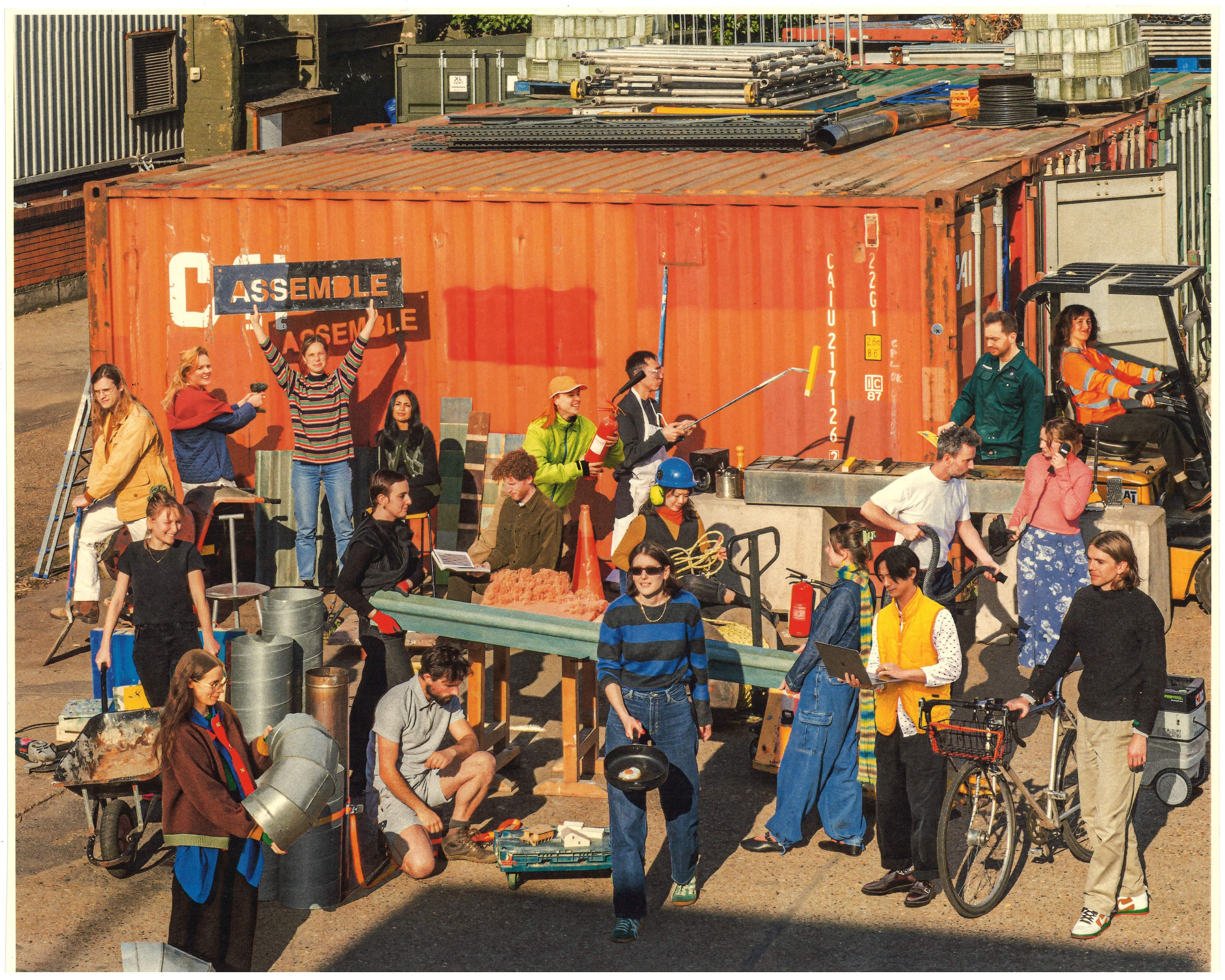 15 years of Assemble, the community-driven British architecture collective
15 years of Assemble, the community-driven British architecture collectiveRich in information and visuals, 'Assemble: Building Collective' is a new book celebrating the Turner Prize-winning architecture collective, its community-driven hits and its challenges